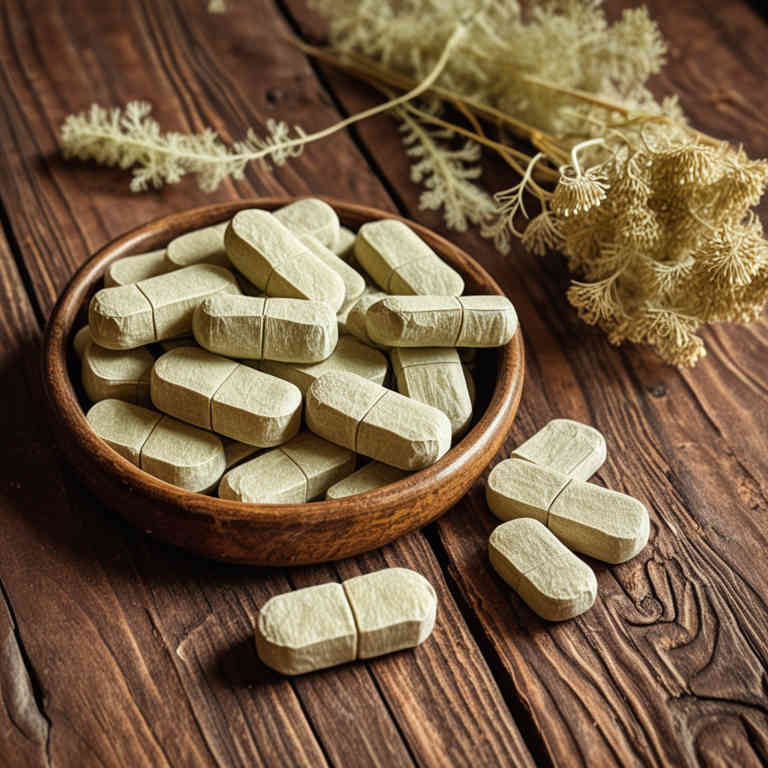Angelica archangelica lozenge for medicinal use

Angelica archangelica lozenge is a traditional herbal preparation made from the dried root of the angelica plant, known for its aromatic and medicinal properties.
It is commonly used in herbalism to soothe respiratory conditions such as coughs, colds, and bronchitis due to its expectorant and antispasmodic effects. The lozenge form allows for direct application to the throat, providing relief from soreness and irritation. It is also believed to support digestion and promote circulation.
This preparation has been historically valued for its warming properties and is often used during seasonal changes or in cold climates.
Uses
Angelica archangelica lozenge has been used to soothe respiratory discomfort and support immune health for centuries.
Historically, it was valued in traditional medicine for its expectorant properties, helping to clear mucus from the lungs and ease coughing. In medieval Europe, it was often used to treat ailments like coughs, colds, and bronchitis, and was believed to have protective properties against the plague. Modern uses include its role in herbal remedies for respiratory conditions, with its essential oils providing antispasmodic and anti-inflammatory benefits.
Today, it is commonly found in natural health products as a supportive aid for respiratory wellness.
Benefits
Angelica archangelica lozenge has health benefits such as supporting respiratory health, easing coughs, and promoting clear breathing.
This herbal preparation is known for its expectorant properties, which help to loosen mucus and phlegm in the airways. It may also have antimicrobial and anti-inflammatory effects, making it useful for treating colds and throat irritations. The lozenge form allows for easy consumption and prolonged contact with the throat, enhancing its therapeutic effects.
Angelica archangelica is also believed to support digestion and circulation, contributing to overall wellness.
Constituents
Angelica archangelica lozenge active constituents include volatile oils, such as limonene and phellandrene, as well as compounds like angelica acid and sesquiterpene lactones.
These components contribute to its expectorant and anti-inflammatory properties, making it useful for respiratory health. The lozenge is traditionally used to alleviate symptoms of coughs, bronchitis, and other respiratory conditions. It may also support digestion and have mild sedative effects due to its aromatic compounds.
Overall, the preparation is valued for its soothing and therapeutic benefits in herbal medicine.
Preparation
To make Angelica archangelica lozenge, first, gather fresh or dried Angelica archangelica roots and clean them thoroughly.
Next, grind the roots into a fine powder and simmer them in water for about 30 minutes to extract the essence. Strain the liquid and combine it with honey or a sweetener of your choice to create a syrup. Then, pour the syrup into a mold and allow it to cool and solidify in the refrigerator.
Finally, remove the lozenges and store them in an airtight container for use as needed.
Side Effects
Angelica archangelica lozenge may lead to gastrointestinal discomfort, such as nausea, vomiting, or diarrhea, in some individuals.
It can also cause allergic reactions, including skin rashes, itching, or more severe symptoms like anaphylaxis in sensitive people. Prolonged use may lead to liver toxicity, especially in those with pre-existing liver conditions. The lozenge may interact with certain medications, such as anticoagulants or antidepressants, increasing the risk of adverse effects.
It is important to consult a healthcare professional before using this preparation, especially for pregnant or nursing women and children.